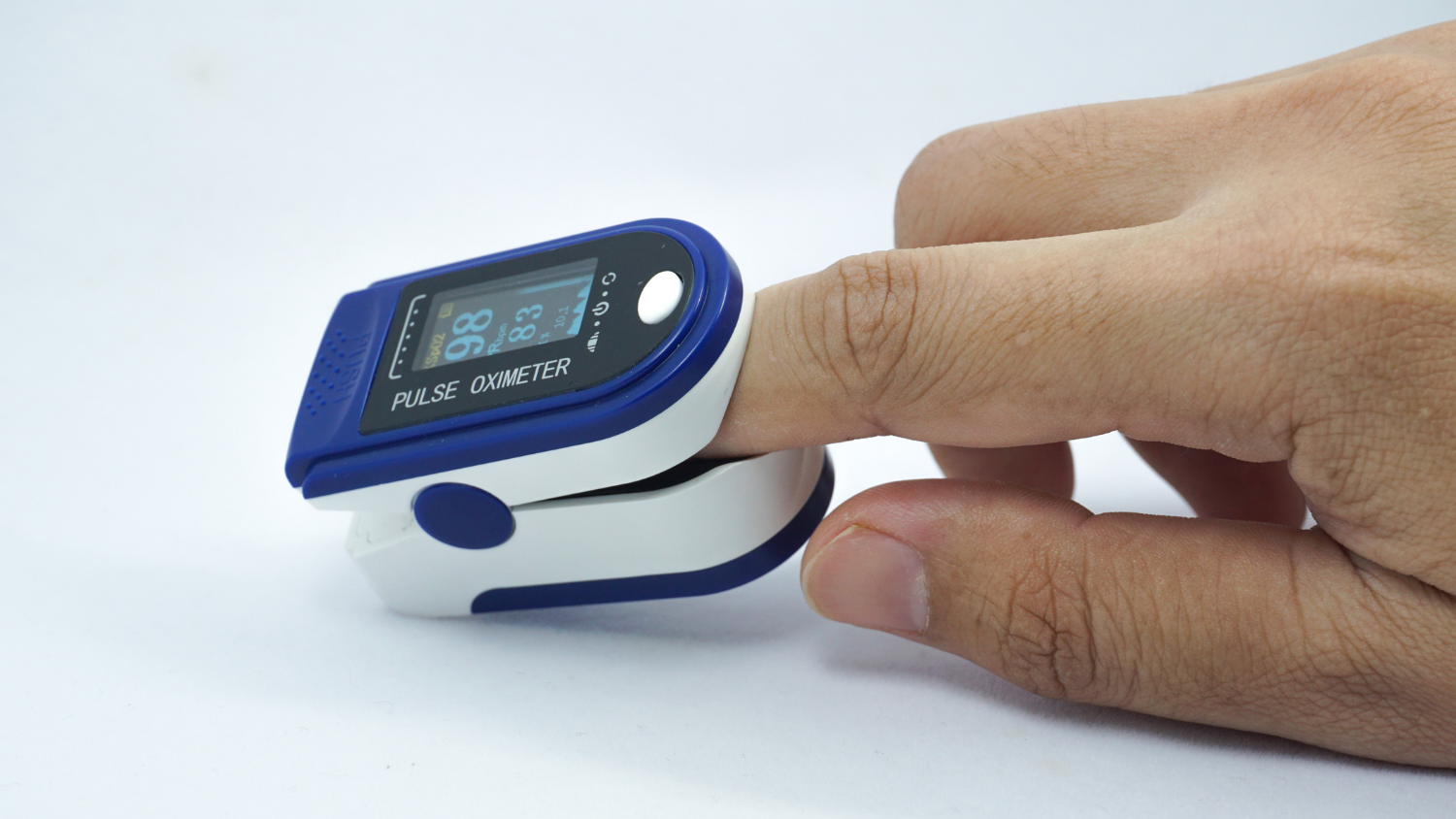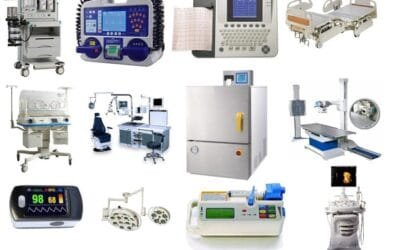Pulse oximeters have become a go-to tool in homes, hospitals, and fitness settings alike. But what exactly are they? And how can they help you track your health? Let’s dig deep!
What is a Pulse Oximeter?
A pulse oximeter is a small, clip-like device that measures the oxygen level (SpO₂) in your blood and your heart rate. It’s that little gadget you often see clamped onto someone’s fingertip in hospitals.
These devices are non-invasive and offer immediate readings, making them especially useful in both professional medical environments and personal health monitoring. Their ease of use and portability have contributed to their widespread adoption across a wide range of health and wellness settings.
How Does a Pulse Oximeter Work?
Think of a pulse oximeter as a tiny flashlight that shines two types of light—red and infrared—through your fingertip. It then measures how much light is absorbed by the oxygenated and deoxygenated blood in your arteries. The result? A quick snapshot of your blood oxygen level.
The difference in light absorption between oxygen-rich and oxygen-poor blood gives the device the information it needs to calculate your SpO₂ level. It also detects the pulse by identifying the rhythmic rise and fall of blood flow in your capillaries.
Key Components of a Pulse Oximeter
- Sensor probe: Clips onto your finger, toe, or earlobe
- Display screen: Shows your SpO₂ and pulse rate
- LED lights: Emit red and infrared light for accurate readings
Some advanced models may include features like perfusion index (PI), pulse waveform graphs, and Bluetooth connectivity to sync with health tracking apps.
Primary Uses of a Pulse Oximeter
Pulse oximeters are surprisingly versatile. Let’s explore what they’re used for!
Monitoring Blood Oxygen Saturation (SpO₂)
This is the main job of a pulse oximeter—checking how much oxygen your blood is carrying. A normal reading for most people is between 95% and 100%. Values under 90% may signal hypoxemia and require medical attention.
Checking Pulse Rate
Your pulse oximeter doesn’t just measure oxygen—it also tracks your heart rate, making it a handy tool for checking your vital signs in a snap. Athletes and patients with heart conditions especially benefit from this feature.
Evaluating Respiratory Conditions
If you have a lung condition like asthma or COPD, a pulse oximeter helps you keep tabs on your oxygen levels, especially when you’re feeling short of breath. It helps identify episodes of desaturation that might require medical intervention.
Medical Applications of Pulse Oximeters
Let’s look at how these little devices make a big impact in the medical world.
Use in Hospitals and Clinics
Doctors and nurses rely on pulse oximeters during surgeries, in emergency rooms, and even during routine check-ups to make sure your oxygen levels stay steady. They are essential tools in anesthesiology and critical care, often used continuously to track patients’ oxygen levels in real time.
Home Monitoring for Chronic Conditions
Got a chronic lung disease or heart condition? Your doctor might recommend using a pulse oximeter at home to stay on top of your health. This allows patients to catch drops in oxygen early and follow personalized health plans without frequent hospital visits.
Managing COPD and Asthma
People with COPD or asthma often use pulse oximeters to monitor their oxygen levels. If those levels dip, it’s a sign they need to take action, like using an inhaler, adjusting medication, or seeking medical help. This form of monitoring is especially helpful during flare-ups or changes in weather.
Sleep Apnea Management
For folks with sleep apnea, pulse oximeters can be a lifesaver—literally! They track dips in oxygen levels while you sleep, which can help your doctor adjust your treatment plan. Some advanced pulse oximeters work alongside sleep monitors or CPAP machines.
Fitness and Sports Applications
Pulse oximeters aren’t just for hospitals—they’re for athletes, too!
Tracking Oxygen Levels During Workouts
Athletes use pulse oximeters to make sure they’re getting enough oxygen during intense workouts. After all, muscles need oxygen to perform! Maintaining optimal oxygen levels helps maximize endurance and reduce fatigue.
Monitoring Recovery After Exercise
After a tough workout, checking your oxygen saturation helps you see how fast your body recovers. If your levels bounce back quickly, you’re in good shape! It can also help detect overtraining or early signs of respiratory distress.
COVID-19 and Pulse Oximeters
During the COVID-19 pandemic, pulse oximeters became a hot topic. Here’s why.
Spotting Early Signs of Hypoxia
COVID-19 can cause “silent hypoxia”—low oxygen levels without obvious symptoms. A pulse oximeter can catch these early warnings before you even feel short of breath, making early intervention possible and potentially saving lives.
Remote Monitoring of COVID-19 Patients
Many doctors used pulse oximeters to help patients monitor their oxygen levels at home, avoiding unnecessary trips to crowded hospitals. This also helped conserve healthcare resources during peak pandemic times.
Safety Precautions and Best Practices
To get accurate readings, you need to use your pulse oximeter the right way.
Proper Use of Pulse Oximeters
- Sit still while taking your reading
- Remove nail polish (it can mess with the sensor)
- Make sure your finger is warm and relaxed
Common Misreadings and How to Avoid Them
Movement, cold fingers, and even dark nail polish can skew your readings. If you’re getting weird numbers, check these factors first!
Factors Affecting Pulse Oximeter Accuracy
Accuracy can vary, so let’s cover what can throw off your results.
Skin Pigmentation and Nail Polish
Darker skin tones and nail polish can sometimes absorb the light from the oximeter, leading to slightly lower readings. Choose devices that are FDA-cleared or clinically validated for better reliability across skin tones.
Movement and Poor Circulation
Wiggling your fingers or having cold hands can trick the sensor. Always stay still and keep your hands warm for the best results. Inconsistent readings may also occur if the device isn’t properly positioned.
Choosing the Right Pulse Oximeter
Not all pulse oximeters are created equal. Let’s talk about what to look for.
Key Features to Look For
- Clear, easy-to-read display
- Fast, accurate readings
- Automatic shut-off to save battery
- Compact, portable design
Other helpful features include memory storage, alert alarms for low oxygen, and Bluetooth connectivity to track data over time.
Cost vs. Quality
You don’t have to break the bank for a reliable pulse oximeter. Many good models are available at reasonable prices—just check the reviews! For medical-grade accuracy, look for FDA approval or CE marking.
Conclusion
Pulse oximeters might be small, but they’re mighty tools for keeping tabs on your health. From monitoring chronic conditions to tracking your workout recovery, they’re a simple way to stay in tune with your body. So, whether you’re an athlete, a patient, or just curious, a pulse oximeter can be your window into better health.
Understanding how to use them correctly and what affects their accuracy ensures you get the most out of this simple yet powerful device. As technology advances, pulse oximeters are becoming even more accessible and smarter, making personal health monitoring easier than ever.
FAQs
How do I know if my pulse oximeter reading is accurate?
Make sure your hands are warm, you’re sitting still, and your device is working properly. If you’re unsure, compare your readings with your doctor’s equipment.
Can I use a pulse oximeter on children?
Yes! Just make sure to use pediatric-specific pulse oximeters, as regular ones may not fit small fingers properly.
Do I need a prescription to buy a pulse oximeter?
Nope! Most pulse oximeters are available over the counter and online without a prescription.
How often should I check my oxygen level?
If you’re healthy, you probably don’t need to check it regularly. But if you have a chronic condition or symptoms of COVID-19, your doctor might recommend daily checks.
What’s the ideal oxygen level for healthy adults?
Generally, 95–100% is considered normal. Levels below 90% could indicate a medical emergency—time to call your doctor!




0 Comments